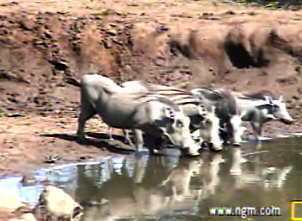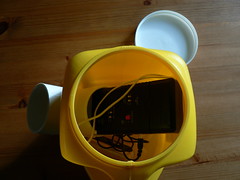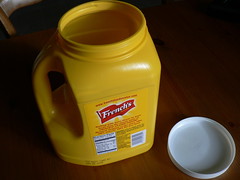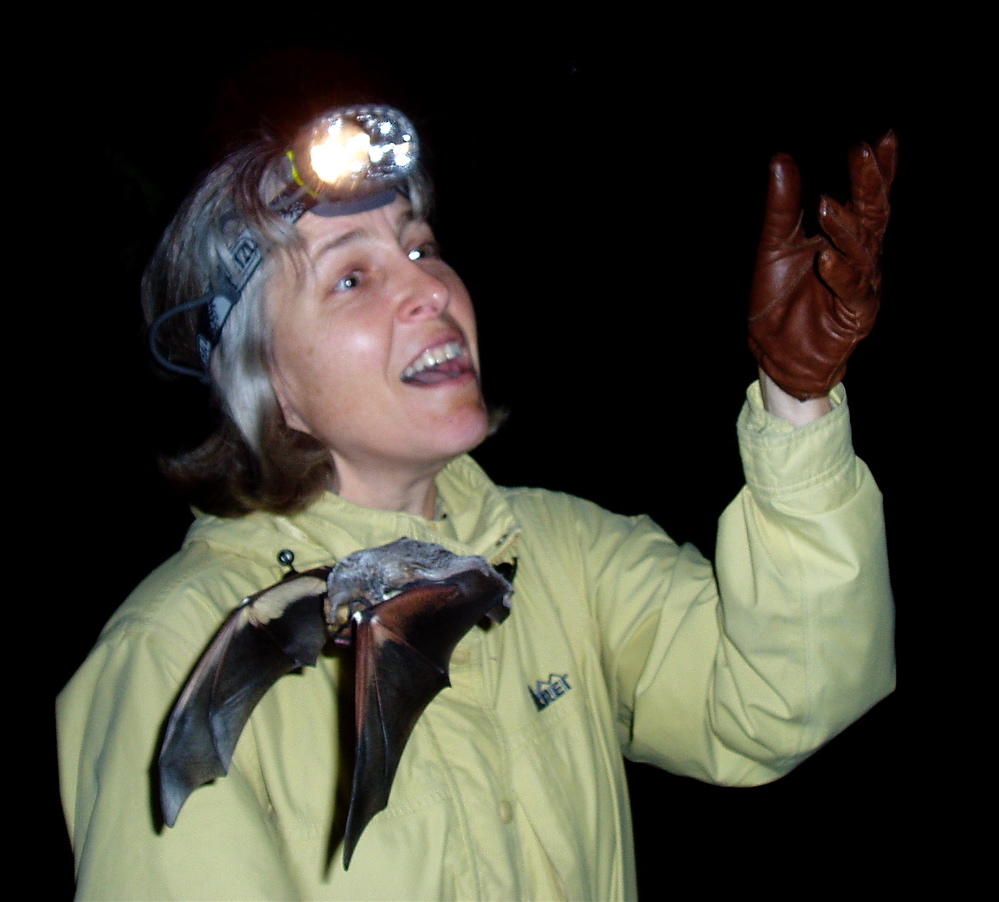I got a chance to look over my notes from the recent
North American Symposium on Bat Research and here are some of the fun things I learned.
The coolest thing was a new bat species
Anoura fistulata, which can stick out its tongue more than twice as far as any other bat. In fact, its tongue is longer relative to its body length than any other mammal, including anteaters. It is the exclusive pollinator of
Centropogon nigricans, which as you can imagine has a flower with a Very Long Tube. How could a bat have such a long tongue? Instead of attaching to the back of its mouth, it actually attaches to its sternum. Imagine having your tongue come all the way up from your chest. Wierd.
Some other bits I picked up:
- Do nets work to capture bats? Films at nets in Monserrat show that only 4.2% of bats flying near nets were actually captured in the nets. So not only do you miss the bats that fly higher than the nets, but you also miss almost all the bats that fly low enough. Yet another reason to stick to acoustic monitoring.
- If you do research on tree bats, take lessons on professional tree climbing so you don't break your neck.
- If pandas and cheetahs are called "charismatic megafauna", then bats might be called "enigmatic shadowfauna". Kind of a cool term.
- There is now a pit tag reader, like what you'd use to read the microchip in your dog or cat, that works under water. It was designed for fish, but it turns out you can use it to track bats drinking at water holes. A clever study showed that lactating female bats drink way more than females without pups.
- My friend Kiera showed fun video clips of a maternal colony of Townsend's big-eared bats. There's a nice clip of one of the mother bats working her way out to the edge of her group, turning over to hang from her thumbs, and then taking a leak. Then she flips back over to hang upside down again and works her way back into the crowd. Remember this important etiquette tip next time you're hanging with the bats.
- There was a session on bat play which showed that bat pups do indeed engage in play, but only with other pups their own age. Sadly, there were no video clips. I wonder what games they play?
Finally, after
last year's focus on bat mortality at wind farms, we had a flurry of related papers this year. Wind turbines are going up across North America at an amazing rate. While the highest mortality rates for bats appears to still be in the southeastern forests, many bats were also killed at turbines in the Canadian prairies. The majority of bats killed at turbines are migrating tree bats. Turbine height seems to be the key to mortality rates for bats -- the higher the turbine, the more bats killed. This pattern is not seen in bird mortality. So a strategy of fewer but bigger turbines might save birds, but will probably kill more bats.
The best news is a device designed to emit ultrasound, which would theoretically keep bats from being able to echolocate. The idea is that you could mount one or more of these loudspeakers (which would be silent to humans) around wind turbines, and the bats would avoid them. Early trials show that bats do tend to avoid areas where these speakers are broadcasting. Now it's a small matter of dealing with the physics of pushing that much high-frequency sound through the atmosphere. I'm sure you can figure it out, Joe.
 The National Geographic webcam at Pete's Pond in Botswana is online again. Here are some warthogs taking a drink (right before they wallowed in the mud) yesterday. You can watch the wildlife all day and all night - right now it's night there, and I just saw a ringtailed cat or something like that sneaking in for a drink. Cool.
The National Geographic webcam at Pete's Pond in Botswana is online again. Here are some warthogs taking a drink (right before they wallowed in the mud) yesterday. You can watch the wildlife all day and all night - right now it's night there, and I just saw a ringtailed cat or something like that sneaking in for a drink. Cool.




